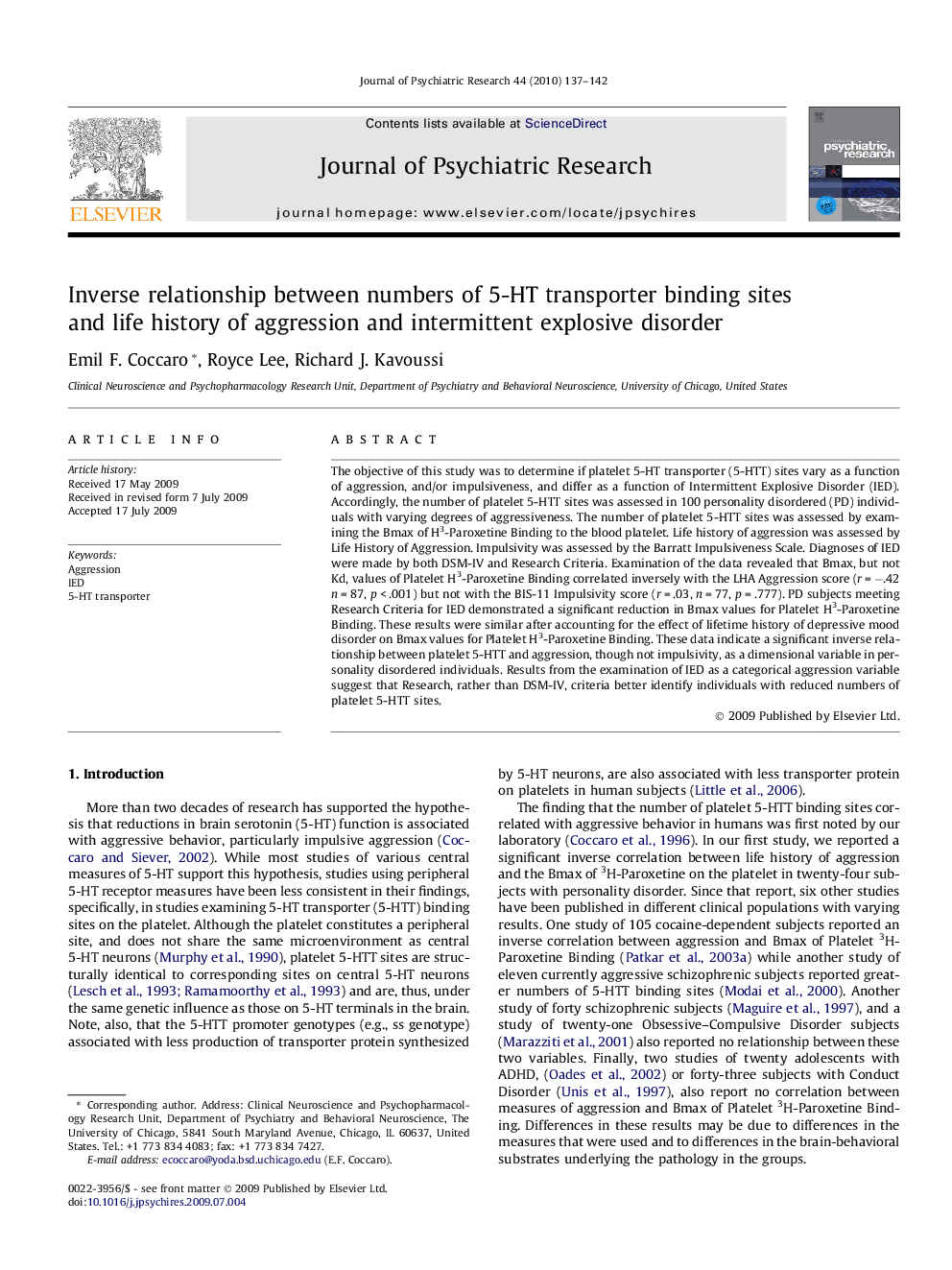| Article ID | Journal | Published Year | Pages | File Type |
|---|---|---|---|---|
| 327810 | Journal of Psychiatric Research | 2010 | 6 Pages |
The objective of this study was to determine if platelet 5-HT transporter (5-HTT) sites vary as a function of aggression, and/or impulsiveness, and differ as a function of Intermittent Explosive Disorder (IED). Accordingly, the number of platelet 5-HTT sites was assessed in 100 personality disordered (PD) individuals with varying degrees of aggressiveness. The number of platelet 5-HTT sites was assessed by examining the Bmax of H3-Paroxetine Binding to the blood platelet. Life history of aggression was assessed by Life History of Aggression. Impulsivity was assessed by the Barratt Impulsiveness Scale. Diagnoses of IED were made by both DSM-IV and Research Criteria. Examination of the data revealed that Bmax, but not Kd, values of Platelet H3-Paroxetine Binding correlated inversely with the LHA Aggression score (r = −.42 n = 87, p < .001) but not with the BIS-11 Impulsivity score (r = .03, n = 77, p = .777). PD subjects meeting Research Criteria for IED demonstrated a significant reduction in Bmax values for Platelet H3-Paroxetine Binding. These results were similar after accounting for the effect of lifetime history of depressive mood disorder on Bmax values for Platelet H3-Paroxetine Binding. These data indicate a significant inverse relationship between platelet 5-HTT and aggression, though not impulsivity, as a dimensional variable in personality disordered individuals. Results from the examination of IED as a categorical aggression variable suggest that Research, rather than DSM-IV, criteria better identify individuals with reduced numbers of platelet 5-HTT sites.
